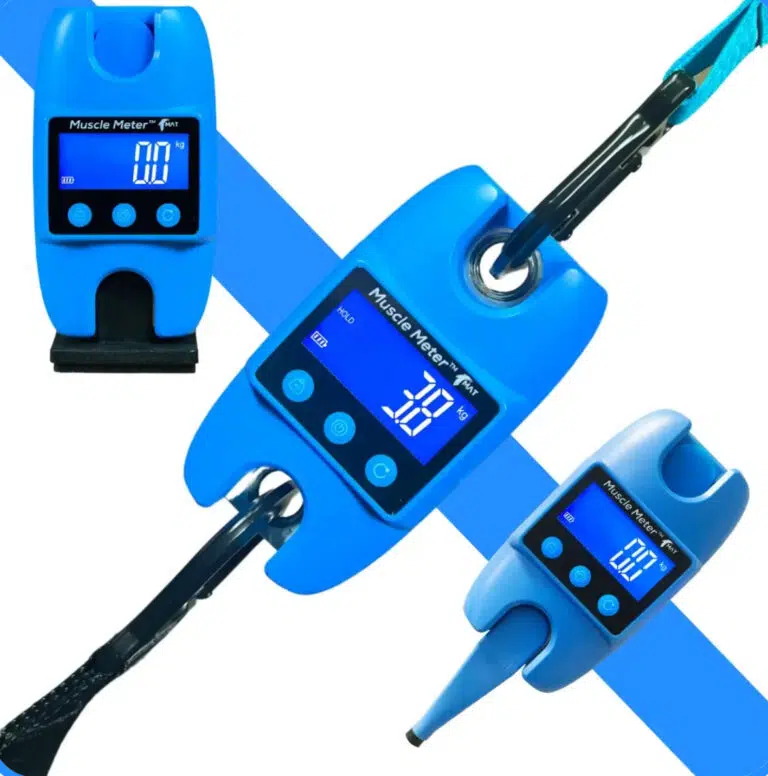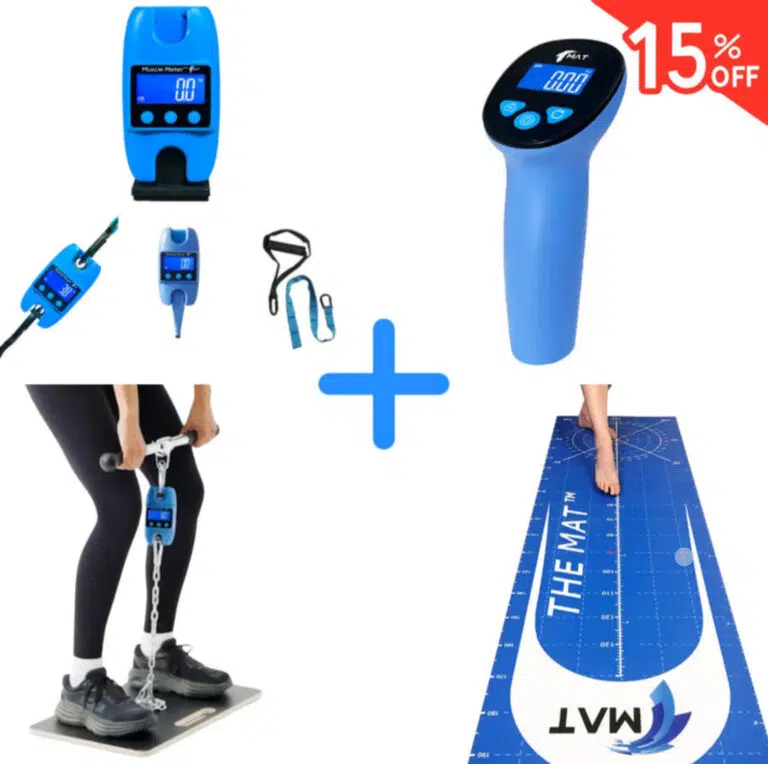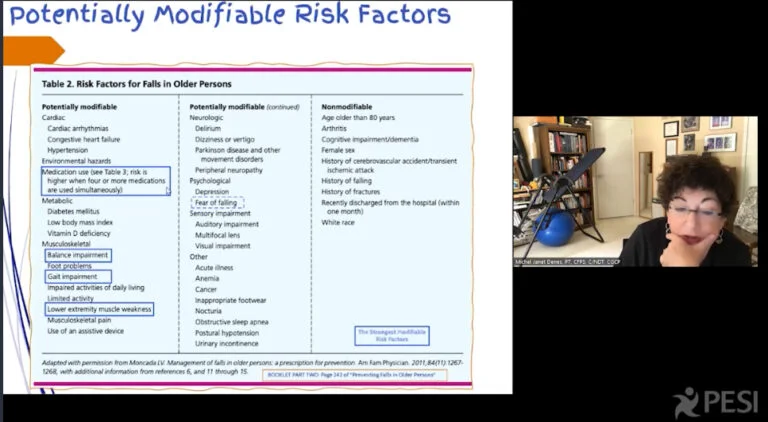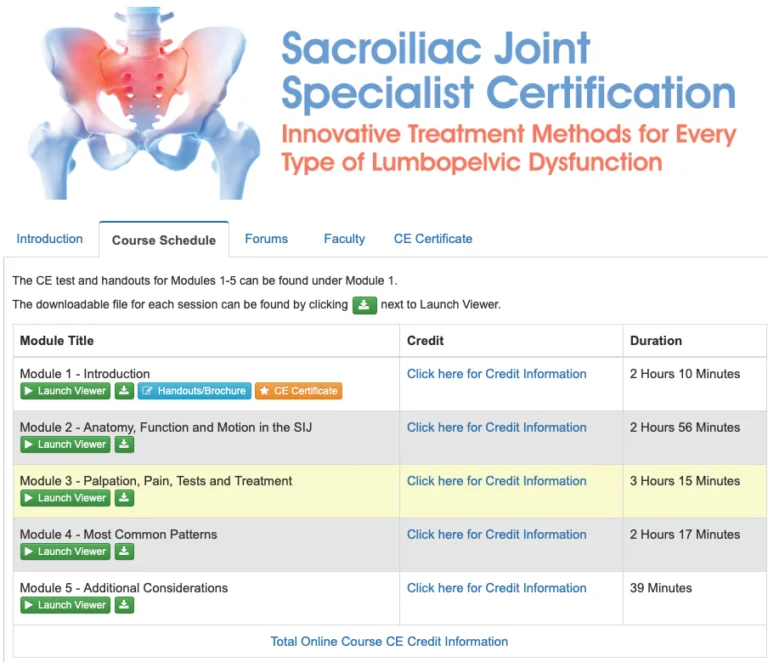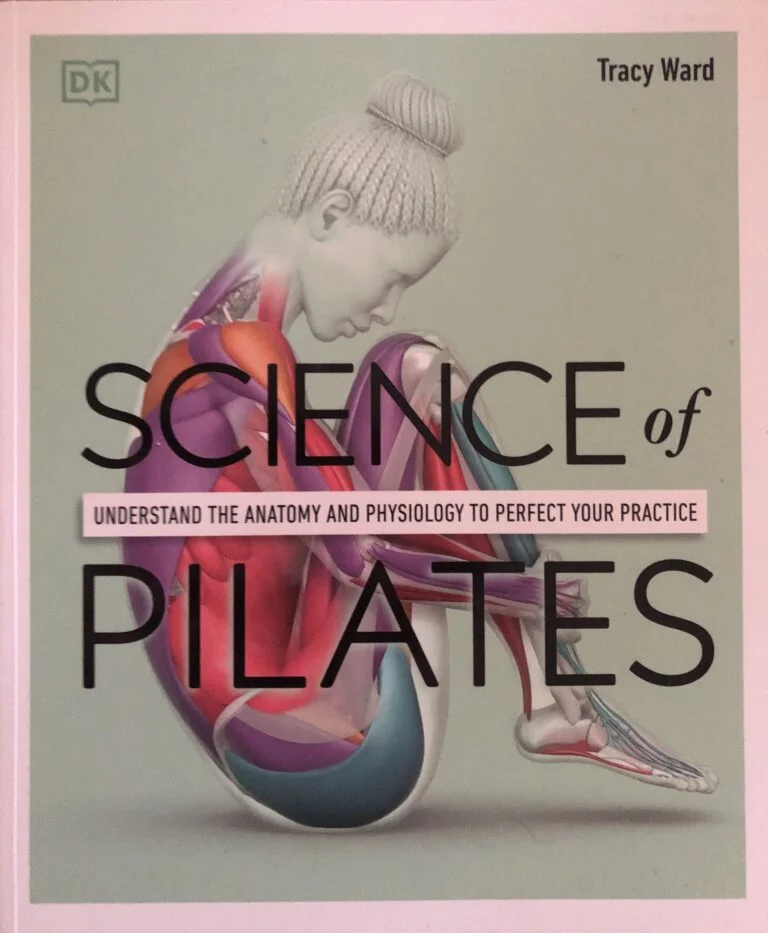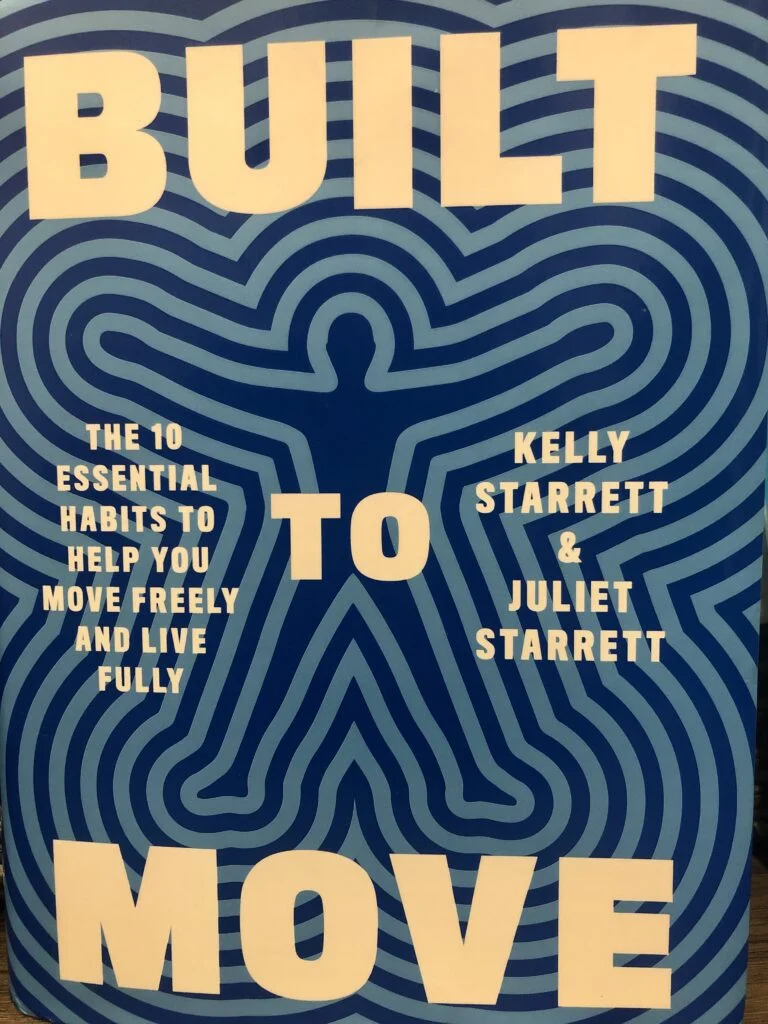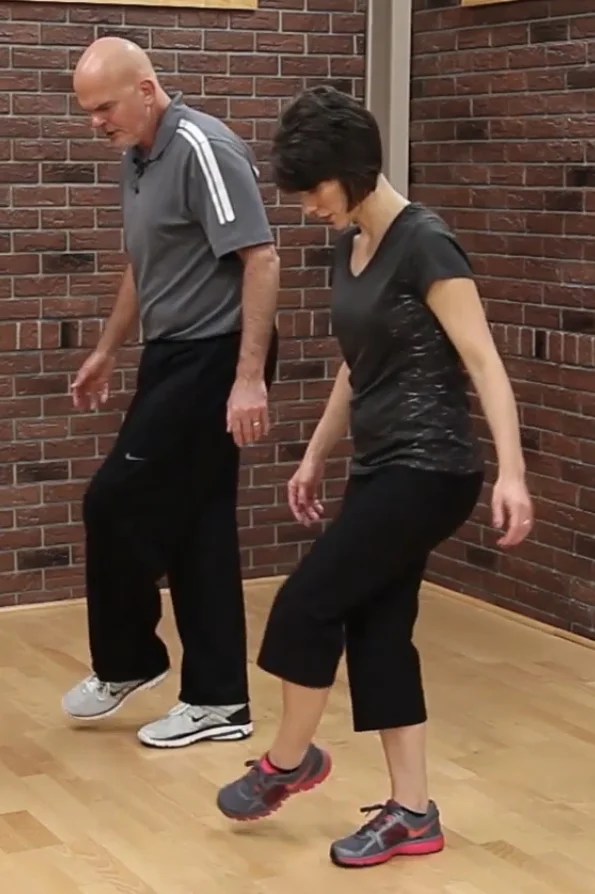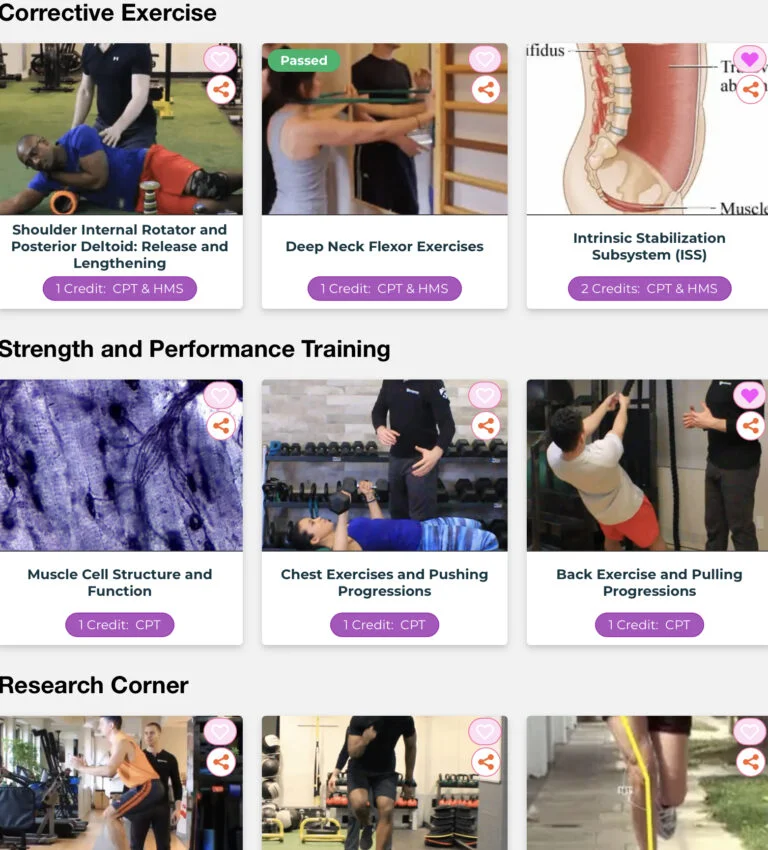Our comprehensive Built from Broken review lets you know why this is such a popular fitness book. We’ll also consider how some of the claims stack up against scientific research.
Scott H. Hogan, Built from Broken: A Science-Based Guide to Healing Painful Joints, Preventing Injuries, and Rebuilding Your Body (Salt Wrap: 2021), 348 pp. ISBN: 1735728500; 978-1735728506
Built from Broken: A Science-Based Guide to Healing Painful Joints, Preventing Injuries, and Rebuilding Your Body [paid link] makes several bold statements about how to work your way out of pain and to better health. The subtitle claims that the program is “science-based,” and body geeks will be thrilled over the number of studies that inform this book.
This Built from Broken review shows why it’s an outstanding introduction to key concepts and recent research in the benefits of resistance training. You don’t have to know a thing about weight training or movement science to get a lot out of this book; all concepts are clearly explained, and sources are provided for additional information.
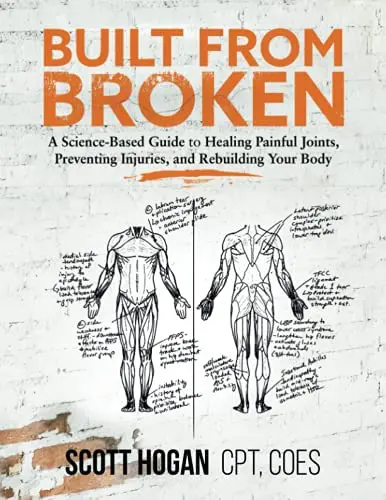
Purchase here from Amazon.
Overview
Built from Broken is divided into two general sections: Part 1: Principles and Strategy (chapters 1-9) and 2) the Training Program (chapters 10-12). It might be surprising that so much attention (nine chapters) is given to part one, but Hogan takes pains to lay a solid foundation for the exercises. This is time well spent, as the central claim – that heavy, slow weight lifting is crucial to healing and preventing tendon damage – will come as a shocker to many.
Built from Broken is focused on preventative, restorative exercise via resistance training. It’s not concerned with making you bigger or skinnier, and there’s little focus on important other important aspects of health such as cardio and nutrition.
If you just want some exercises, you can skip to Chapter 11. But the book has much more to offer. It will greatly deepen your understanding injury, recovery, and optimal health. If you spend time with each chapter, you will be a much better instructor and practitioner.
Intended reader
Hogan states, “I wrote this book with a certain kind of person in mind: someone who already exercises at least a few days per week but suffers from joint pain and is frustrated by their results” (p. 194). But the book is also wonderful for injury prevention and general exercise strategies.
You can jump in and learn a few exercises, but you’ll be missing out on an enormous contribution of Built from Broken: a systematic, well thought-out, cumulative program for improving your joint health no matter what your current condition.
Why weight train? Tend to your tendons!
Built from Broken [paid link] makes an excellent case for weight training. Specifically, it recommends that everyone should include Heavy Slow Resistance (HSR) training as a portion of their exercise program. The book has no interest in buff bods, slim waists, or super human strength. HSR is recommended simply because it will help you move pain free for more of your life.
If you’re like me, this idea might throw you for a bit of a loop. And if you associate weight lifting with cavalier attitudes toward health and longevity, then that’s all the more reason to study Built from Broken carefully. Because what you’ll discover is a well-written argument that supports its program through numerous scientific studies and personal experience.
Built from Broken makes the sustained argument that heavy slow resistance exercise increases and enhances joint health. When using proper form, Hogan argues that weight training provides a safe lab for us to teach our minds and joints to handle whatever life throws at us.
Built from Broken and Pilates
What do the claims of the necessity and benefits of high-resistance training have imply for lower-resistance exercise forms like Pilates? There’s really no way of softening this blow: it says that Pilates probably isn’t enough to strengthen tendons. While Pilates exercises may have the slow tempo to satisfy Heavy Slow Resistance, they are typically not dealing with enough resistance.
There are some important caveats, however. First, Pilates repertoire does contain some heavy lifting exercises, such as the inverted series on the Cadillac. Second, heavy spring tension can correspond to heavy weight. Remember that heavy weight is around 80% of the weight you can do one time. While you may not want to spend an entire session with a client doing heavy springs and pushups, you may pepper your session with Heavy Slow Resistance exercises.
While it’s never stated explicitly in the cover material for the book, Built from Broken is exceptionally relevant for clients middle-aged and beyond. If you have this clientele, the information here is invaluable. It can help you:
- structure programs for clients with tendon pain
- address their issues more knowledgeably
- be better informed about when to refer them to specialist
- Become familiar with the language and conditionsthose specialists might use in your correspondence about the client (e.g., tendinosis, osteoarthritis)
Built from Broken provides descriptions of 43 exercises. Around two-thirds of those only need minimal props (e.g, resistance bands), which is a big plus. Get some heavier dumbbells (as opposed to handweights),and you can do most of the exercises in the book on Pilates equipment.
But, if you are trained in Pilates, you might find the descriptions a bit minimal in detail (“Bridge up.” How?) or repeating some traditional approaches many practitioners are trying to move beyond (e.g., shoulders stay down and back). So you can use your fine-tuned Pilates cuing to get even more out of these exercises for your clients.
Indeed, there are some strong reasons why this book deserves a Pilates instructor’s time:
- Clear presentation of why most clients should be doing some heavy resistance exercises
- Descriptions of exercises covering most areas of the body
- Introduction to movement science concepts and terms that could let you engage with a large field of knowledge
- Information about structuring periodization into your client’s training
- Great list of sources to consult for more information about tons of topics
Pros: Strengths of Built from Broken
- Very practical: provides detail of specific exercises, and even programs you can assign for clients of different fitness levels
- Makes use of lots of scientific studies
- Some great debunking of fitness myths
- Clearly organized and well written: you can jump to sections of interest to you
Grows: Areas for growth in Built from Broken
A big impracticality of Built from Broken [paid link] is that the appendix, where you find the exercise programs for various fitness levels, doesn’t have page numbers for the exercises. So that means you would have to flip back and forth between the program and exercise descriptions, which is a pain.
That’s why we created the list (and downloadable PDF) below of all of Built from Broken’s exercises and page numbers. Enjoy!

Second, Built from Broken provides scientific studies for nearly all its claims, which is great. However the book could go further acknowledge important studies that do not support or contradict its claims.
In critical thinking, this is called “cherry-picking”: picking the claims that support your premise and ignoring contradictory evidence.
For example, Hogan states, “Weight training effectively boosts production of brain-derived neurotrophic factor (BDNF), a naturally occurring protein responsible for nerve cell maintenance,” which sounds like an unanticipated benefit of weight training. And sure, there is support for this claim by Yarrow et al (2010) and more recently by Marston et al (2017). However many studies found increases in BDNF only following aerobic exercise (and not resistance training), while other studies found no notable increase following resistance training (e.g., Dinoff et al (2016), Goekint et al (2010) and Knaepen et al (2010)).
However, on the whole Built from Broken makes responsible use of research and often acknowledges opposing evidence.
Chapter-by-Chapter Synopsis
Our Built from Broken [paid link] review features an overview of each chapter. Find out what’s inside!
Healthy feet…great price!
- Fast shipping for $3-5
- Great variety
- Long-lasting quality
- Add lace-locks for quick changes

Try minimalist shoes from XeroShoes.com!
Chapter 1: A Case for Load Training
The first chapter comes out strong citing studies that demonstrate the benefits of heavy resistance exercise. Early in the book, Hogan comes out swinging, stating:
“Load training (a.k.a. resistance training) is the most effective lever for resolving joint pain and building a resilient body. Everything else—stretching, foam rolling, manual therapy, massage, flossing, smashing, taping, cracking, and popping—is secondary. You can spend hours each week on extraneous soft tissue and recovery work, but if you don’t effectively utilize load training, you won’t get the relief you’re looking for” (9)
It is when we get to lifting heavy loads, defined as around 80% of a one-repetition maximum, that Hogan argues we see benefits such as healing of tissues and significant increases in physical and mental health among elderly populations.
Chapter 2: The Anatomy of Pain
The next two chapters discuss pain and how it can be decreased by heavy resistance training. Hogan realizes that this claim is counterintuitive to most readers, so he takes his time analyzing different types, causes, and theories of pain before addressing how pain can be diminished though resistance training. Chapter 2 delivers a brief biological and neurological handling of the mechanics of pain.
Chapter 3: What to Focus on Instead of Pain Relief
This chapter denser and packed with great information regarding inflammation, tendinopathy, and joint health. It’s not a complete spoiler to let you know that Hogan suggests focusing on inflammation as well as tendon and joint health rather than pain relief. The chapter acknowledges the benefits of some kinds of inflammation as well as the harmful effects of prolonged inflammation.
Much of the material in this chapter is handled at length in the rest of the book, so we’ll learn more about it below. Built from Broken encourages a holistic approach to dealing with inflammation, including attention to diet, stress, sleep, and healthy movement. The chapter also cites important studies that discourage overuse and abuse of anti-inflammatory drugs, however topical ointments, such as CBD oil and arnica, are curiously not mentioned here.
Chapter 4: How to Train Your Collagen
Several causes for decreased collagen production are listed. Many of these are surprising and most are well-supported (e.g., use of ibuprofen, low-carb diets, and vitamin deficiency), though some of the claims have less support (e.g., steroids).
It might be hoped that this chapter will address the world of collagen supplements, and Built from Broken does not shy away from the subject.
It is strange that glucosamine and chondroitin are not really treated among the supplements that promote joint health. (Read our article Glucosamine supplements for joints)
Chapter 5: Movement: The Original Mobility
While it’s become a bit clique to say “movement heals,” this chapter makes evidence-based arguments illustrating how movement does indeed heal. In the case of injury, the answer lies in reducing pain and avoiding injury through careful exercise that challenges the tendons to strengthen.
You’ll find many studies to cite when you’re clients ask, “Is walking good for me?” (P. 93). The chapter also provides nine great tips for incorporating healthy movement into your life. These include small things you can set up around the house or office to pump a bit of blood into the veins.
Chapter 6: Science-backed Mobility Training
Finally, the exercises you’ve been waiting for! Well, not quite yet. The focus here is on increasing mobility through stability. Hogan makes an important, though certainly not original, point that it is dangerous to increase a range of motion when you don’t have the stability to support it.
This chapter takes some pains to discount static stretching (which Hogan regards as not being backed by science) and promoting mobility training based on weighted (static) and dynamic stretching. The chapter makes some bold claims about stretching (E.g., “The research supporting static stretching is lacking” (p. 115), but contradicts the critique by suggesting static stretches. It also neglects significant studies that promote static stretching. You can watch Dr. Huberman’s podcast (below) to learn about the latest studies on stretching.
Hogan versus Huberman: Watch the Huberman Lab on how you can make major flexibility gains without pain
This chapter covers some important topics in exercise science, such as: reciprocal inhibition, synergistic dominance, planes of motion, and force coupling. The descriptions are easy to follow, which is one reason why this is a great introduction to exercise science/kinesiology for those who are just getting their feet wet.
Chapter 7: Corrective Routines
For all of the next chapters, the focus is toward corrective exercises. Chapter 7 begins with a review of postural faults (i.e., deviations from ideal/normative posture), along with checklists for standing and sitting. This is followed by two routines designed to ease you into movement: a recommended morning routine and a sequence using weights to increase mobility.
Chapter 8: Preventing the Big Three
The big three are pain in the low back, shoulders, and knees. The chapter advocates exercises that are right in line with good Pilates practice: strong glutes, core activity, and creating stability before mobility. Rather than a dynamic engagement of the core, Hogan recommends abdominal bracing more common in heavy-weight lifting (p. 146). Sections on strengthening rotator muscles and thoracic mobility contain solid advice. Although brief, the material on knees and feet contain many commendable exercises. (See Understanding the Human Foot (James Earls): Review for tons of information and exercises for the foot.)
Chapter 9: Injury Recovery: Strategy and Tactics
With plenty of caveats, Chapter 9 tries to give general advice for injury recovery. It gives a strong case for movement and training versus typical advice of RICE (Rest, Ice, Compression, and Elevation) and anti-inflammatory medication. Strangely, the book never mentions massage guns, which are proving to be an excellent tool for recovery. (Check out our article on Massage Guns.)
Chapter 10: Exercise Programming and Periodization: Why It’s Smart to be Discipined
With Chapter 10, readers learn to structure a program that will work for them. Periodization is setting up cycles (or periods) that follow a progressive system based on your goals. The chapter discusses linear, undulating, and block periodization as a backdrop for they system Hogan recommends. The chapter gives readers an understanding for why the recommended workouts in the appendix are structured as they are. The content will come as a very welcome relief for those who have reached plateaus in workouts or are under a ”work until exhaustion” mentality.
While accomodating other schedules, Built from Broken recommends training 4 days a week for at least 4 weeks to really see targeted improvement. Within those 4 weeks, the goals are reduced pain, strengthened tendons, and improved neuromuscular patterning. The evidence-based advice here is also applicable to other exercise programs.
Chapter 11: Mastering the Movements
Here you’ll find a description of all the exercises recommended in the book. The instructions are clear and also give good advice for what not to do during execution. That said, highly trained instructors (such as Pilates instructors) might find the instructions lacking some details also take issue with some cues. The black-and-white illustrations are not terribly clear, and no video links are provided.
Despite the repeated praise of slow, heavy-resistance training, most of these exercises require little or no resistance other than gravity or lighter resistance bands. Hogan explains that some exercises, like bench press, were not included as these can contribute to pain for people with some pre-existing conditions.
Chapter 12: The BFB Training Program
The final chapter prepares the reader to navigate the marvelous appendix. This is a wonderful chapter to help newbies and seasoned lifters find a program that will work best for them. If you’ve studied the previous chapters, you can also enjoy the fact that you can design routines for a diverse pool of clients. The chapter has excellent material on building programs according to goals (and helping identify those goals).
This chapter has some important protocols and notes about contraindications, so it’s worth making some notes before you pick up the dumbbells and get started.
Appendix: Workout Routines
Finally, Built from Broken provides clearly-structured programs based on fitness level and goals. You’ll find all you need here, from specific exercises to number of repetitions to weeks to maintain a program before progressing. This is valuable not only for your own workout program, but also for learning to structure a program around a client’s specific needs.
Built from Broken Exercise List (PDF)
This is a PDF and list of the exercises described in Built from Broken [paid link]. The page numbers aren’t listed in the appendix or the index, so print this out and put it in your book. It saves a lot of hunting around!
Healthy feet…great price!
- Fast shipping for $3-5
- Great variety
- Long-lasting quality
- Add lace-locks for quick changes

Try minimalist shoes from XeroShoes.com!
| Exercise | Page number | Props needed |
|---|---|---|
| Mobility, Core, and Dynamic Warm-up | ||
| Supine Drawing In | 208 | |
| Bird Dog | 209 | |
| Cossack Squat | 210-11 | (optional hand weights) |
| Glute Bridge | 212-13 | |
| Fire Hydrant | 214 | |
| Pigeon Stretch | 215-16 | |
| Cat-Cow | 217 | |
| Hinge to Squat | 218-19 | |
| World’s Greatest Stretch | 220-21 | |
| Anchored Lat Stretch | 222 | Dowel/light bar or band |
| Scapular Pull-up (Active Bar Hanging) | 223-24 | Bar |
| Band Pass Through | 225 | Band |
| Modified Bully Stretch (Retract and Depress) | 226 | |
| Swimmer’s Stretch | 227-28 | |
| Thoracic Extension on Foam Roller | 229 | Roller |
| Shoulder Stability | ||
| Banded W | 230 | Band |
| Band High Pull Apart with External Rotation | 231 | Band |
| Seated Cable High Facepull | 232-33 | Rowing cable, hand springs, or dumbbells |
| Scapular Plane Dumbbell Raises | 234 | Dumbbells or band |
| Bottoms-Up Kettlebell Press | 235 | Kettlebell or dumbbell |
| Upper Body Push | ||
| Incline Dumbbell Fly Press | 236 | Dumbbells and bench |
| Incline Dumbbell Press | 237 | Dumbbells and bench |
| Band Push-up Plus | 238-39 | Band (optional bench) |
| Upper Body Pull | ||
| Single Arm Strict Dumbbell Row | 240-42 | Dumbbell and bench |
| Bent Over Dumbbell Row | 243-44 | Dumbbells and bench |
| Suspension Trainer High Row | 245-46 | TRX-like suspension |
| Reverse Grip Cable Pulldowns | 247 | Pulley cable |
| Lying Dumbbell Pullover | 248 | Dumbbell and bench |
| Upper Body Accessory (Elbows and Wrists) | ||
| Alternating Dumbbell Curl with Suspension | 249-51 | Dumbbells |
| Forearm Tendon Glides | 252-53 | |
| Dumbbell Pronation/Supination | 254-55 | Dumbbells |
| Standing Dumbbell Pullover | 256 | Dumbbell |
| Lower Body Push | ||
| Box Stepdown | 257-58 | Box/elevation |
| Spanish Squat | 259 | Band |
| Goblet Squat | 260 | Dumbbell/Kettlebell |
| Dumbbell Front Squat, Heels Elevated | 261 | Dumbbells |
| Bulgarian Split Squat | 262-63 | Dumbbells |
| Lower Body Pull | ||
| Cable Pull Through | 264 | Pulley cable |
| Dumbbell Romanian Deadlift | 265-66 | Dumbbells |
| Swiss Ball Leg Curl | 267-68 | Swiss ball |
| Barbell Hip Thrust | 269-71 | Barbell or dumbbell |
| Lower Body Accessories | ||
| Ankle Glides | 272 | Roller |
| Standing Straight Leg Calf Raise | 273-75 |
Conclusion

Anyone looking for a book teach you how resistance training can help you relieve joint pain will be very well pleased with Built from Broken. Whether you’re working out alone or training others, the book provides step-by-step instructions for exercises and guidelines on creating programs for different levels of experience and strength.
But Built from Broken is also much more than that. You’ll find tons of evidence-based guidance for building a lifestyle and habits that will keep you out of pain and moving in a healthier way. Movement is at the heart of Built from Broken, and Scott Hogan makes a bold, reasonable, and well-supported argument that movement can heal.
Built from Broken is packed with information and very practical exercises. Take the time to study it and use the exercises. You and your clients will be the better for it.
Support our website by purchasing Built from Broken by using our affiliate links on the site (no added cost to you, but it helps us out!)
(We are an Amazon affiliate.)

